5 Worst Steaks To Cook at Home, According to Chefs
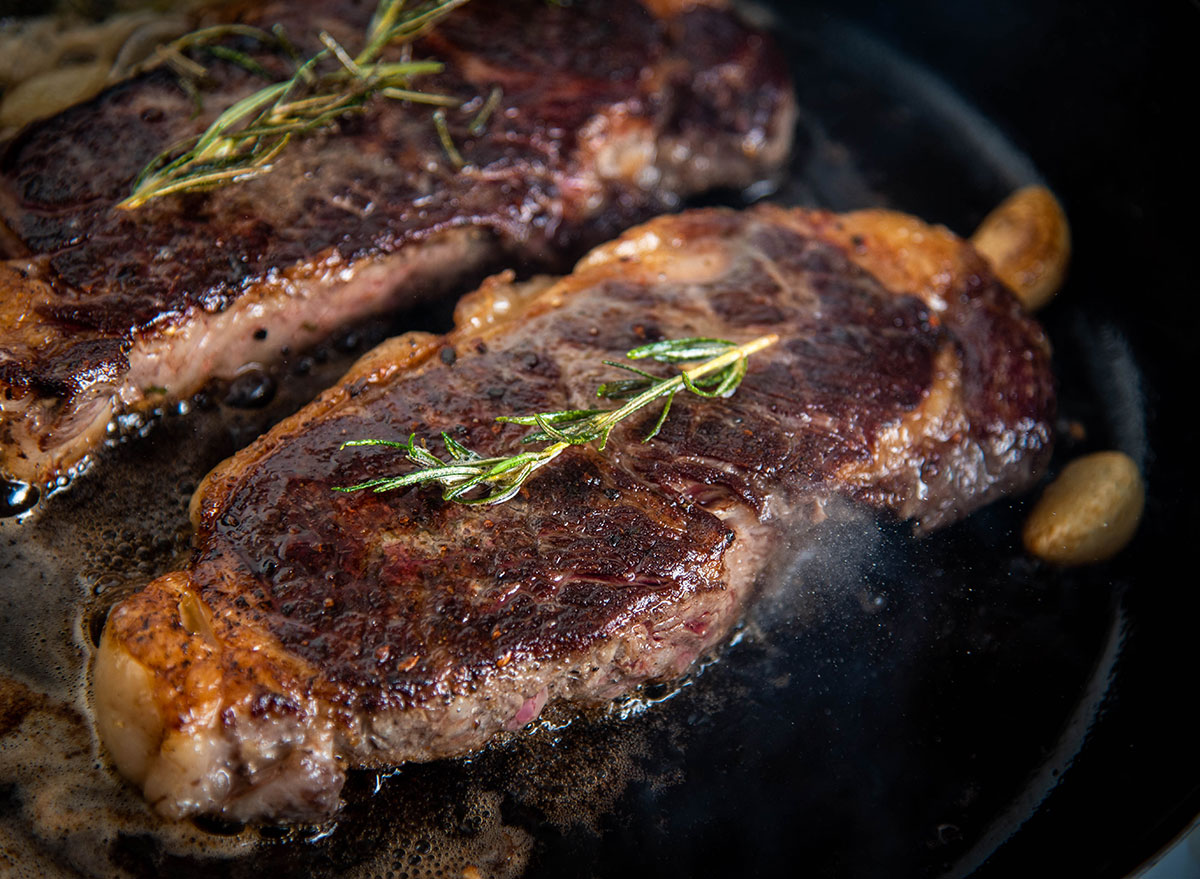
Cooking steak at home is both simple and kind of daunting. On the one hand, a great cut of meat doesn’t need much to shine. It usually benefits from some good seasoning and a nice sear—a simple preparation that seems doable even for beginners. On the other hand, overcook or otherwise mess up a steak, and you’ve just wasted a pretty pricey ingredient.
This is why we’ve consulted professional chefs for their best tips on how to avoid a kitchen disaster. Most of them advocated setting yourself up for success: there are certain steaks that can deliver an easy win—the tried-and-true foolproof cuts that are harder to ruin, even if you make mistakes. On the other hand, some steaks are better avoided if you’re on the more inexperienced side of home cooking.
“Ultimately, the best steak for home cooking depends on your personal taste preferences and cooking skills,” says chef Peter Sidwell, an in-house expert at the U.K.-based kitchen retailer CookServeEnjoy. “When selecting a steak, consider factors like marbling (fat content), thickness, and your preferred cooking method. No matter which steak you choose, proper seasoning and cooking technique will help.”
Here are several steaks that are hardest to tackle in the kitchen. (And if all else fails—you’ve charred the steak beyond recognition and activated the smoke detector—you can always head out to one of America’s best steakhouse chains.)
Round Steaks
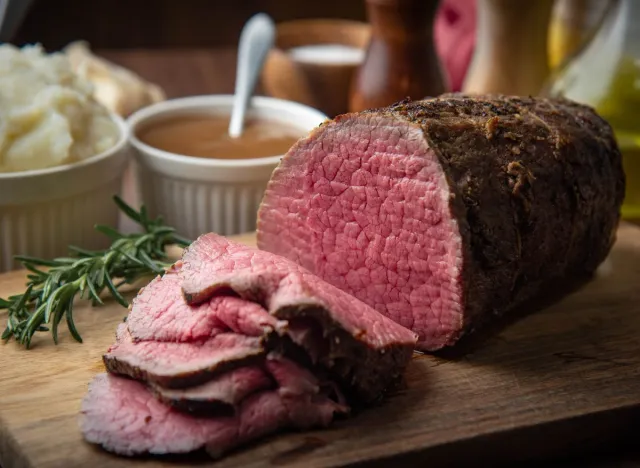
“Round steaks (eye of the round, top round, bottom round) typically have the least amount of fat marbling, which can make them less tasty and more difficult to cook when compared to fattier cuts,” explains Walter Nunez, executive chef at The Rex Steakhouse in Redondo Beach, Calif. These slices come straight from the rear and hind leg of the cow, an area which experiences a lot of movement and is therefore a tighter muscle, making for tougher beef.
“Cooking these at home takes a lot of patience and time since they’re best cooked low and slow–ruling out cooking methods like grilling, reverse-searing, or cooking them on the stove top,” Nunez says. Unless you’re looking for a jaw workout, you are better off using these cuts for braising, stewing, or even slow cooking, according to the chef.
Specifically for eye-round steaks, chef Taylor Kearney suggests thinner cuts or a sous-vide method to combat the toughness. If you try to cook it as you would with a normal steak, “it will never come out like you think,” says Kearney, vice president of culinary at Harwood Hospitality in Dallas, Texas. He spearheads the beef program and oversees over 11 restaurants and bars, including Stillwell’s Steakhouse & Bar.
Tri-Tip Steak
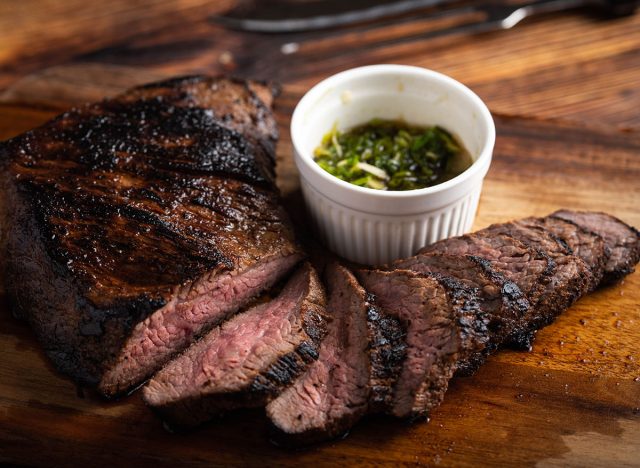
You may recognize this steak by its bulky, triangular shape, hence the name tri-tip. And, you may have been tempted to pick it up at the grocery store because of its reasonable price tag. But chef Kearney warns us to proceed with caution. While this steak does offer nice marbling, yielding great results hinges heavily on how you prepare and clean your cut. Similar to round or chuck cuts, tri-tip can contain a wealth of connective tissue–silvery lines of muscle fibers that run through the meat and “eat like shoe leather” if not removed or handled properly, according to the chef.
Bone-In Ribeye & Other Bone-In Cuts
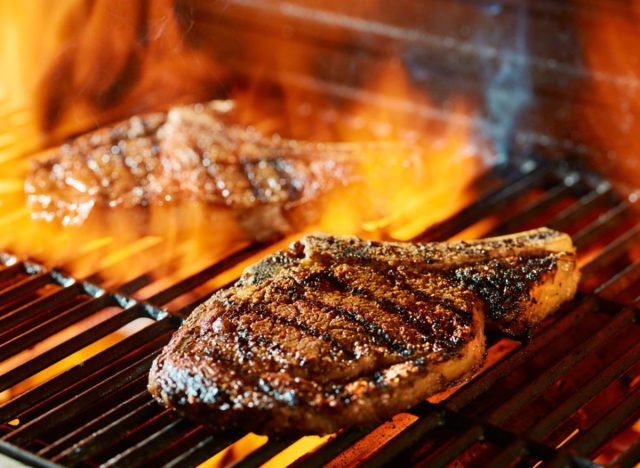
If you ask David Rose, executive chef at the nation’s leading meat delivery company, Omaha Steaks, he’ll tell you that larger steaks, such as bone-in ribeyes, are kryptonite to amateur cooks. “Thicker, bigger cuts of steak (or “king cuts,” as we like to call them at Omaha Steaks) can be a bit trickier to cook at home due to their sheer size,” explains Rose, also a former finalist on the reality TV series Food Network Star. He says the main issue with these colossal cuts is that they’re very easy and common to burn the outside of the steak before the inside reaches the desired doneness.
The actual bone within a bone-in cut isn’t doing you any favors, either. While the bone is thought to enhance the meat’s overall flavor, it also acts as an insulator, causing uneven cooking. The meat closest to the bone will cook more slowly than the rest.
Chef Nunez adds that you should avoid cooking any kind of bone-in steak in a pan because “it’s difficult to get a good sear with the bone in the way.”
Skirt, Flank, & Hanger Steak
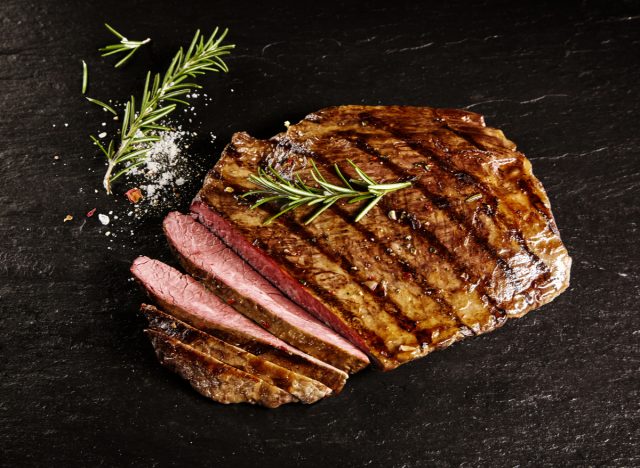
Now, this one is a bit controversial. Some chefs love these thin-cut steaks because they’re inexpensive, rich in flavor, and cook up in a flash on a grill or cast iron skillet. Others say that trying to cook them just right–somewhere between over and underdone–is much like trying to balance on a tightrope.
“Both flank and skirt steaks, while flavorful, are also cuts of beef that are known to be tougher in texture, making them potentially difficult to cook at home–unless you have a grill that can get really hot or you’re willing to trip the smoke alarm,” says Nunez. “With these cuts, you have to be very careful not to overcook them. In fact, anything beyond medium rare is considered overdone for these cuts–otherwise, you’ll end up with a very tough piece of meat.”
Hanger steak, in particular, can turn out nicely using “slow cooking methods like braising or stewing,” according to Sidwell. But, if you don’t have the time or patience for these more leisurely cooking methods, it might be best to avoid the tough steak altogether. Although hanger steak is delicious, flavorsome, and his own personal favorite, Sidwell notes that “it can be tricky to cook evenly due to its irregular shape” and is “best suited for experienced cooks who are comfortable with uneven cooking.”
Strip Steak
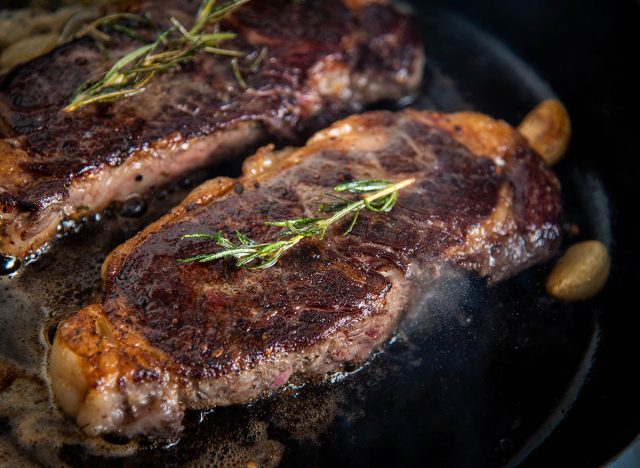
The Strip Steak operates under several different aliases, including Ambassador Steak, Kansas City Strip, Omaha Strip, and, most famously, the New York Strip. It is sliced from the short loin of the cow and cooks up nicely, given its firm and tender physique and lack of bone (the majority of the time it is served boneless).
So, what’s the problem then? Chef Nunez’s hesitation stems from the price of this esteemed cut. All of these admirable qualities makes the New York strip one of the most expensive steaks on the market—and, one you don’t want to risk ruining and wasting as a novice chef.
“We serve New York and Kansas City strip steaks at The Rex, and they’re a specialty of ours, but these aren’t necessarily cuts I would encourage people to make at home unless you’re confident in your cooking skills,” says Nunez. “I would save these cuts for a steakhouse experience—there’s nothing worse than overcooking or burning an expensive cut of meat and not being able to enjoy it.”
If you have the gall and want to try it, the chef recommends applying a reverse searing method to the New York strip–a technique he calls “very forgiving.”